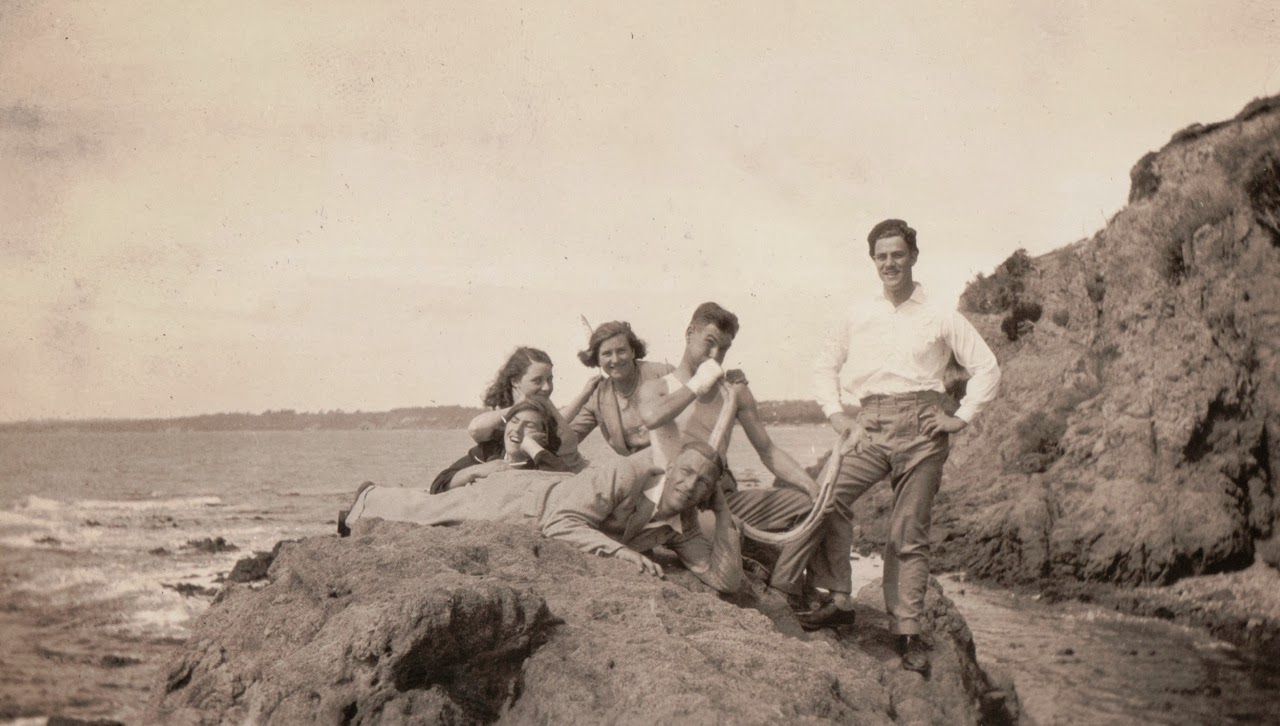The Sepia Saturday prompt for this week shows a barge crossing a flooded river or lake.
I didn’t have any flood
photos in my massive sepia collection, so turned to Trove, the wonderful
National Library of Australia search engine.
 |
| Floods at Yallourn 1934-5 |
I found a large number of
articles and some great photos of the 1934 flood that filled the open cut brown
coal mine at Yallourn in Victoria’s Gippsland.
The first three photos are from the JP
Campbell collection of glass negatives documenting industrial enterprise at
Yallourn, ca 1920-1940 (and held by the State Library of Victoria).
On 1 Dec 1934, flood waters
burst the banks of the Latrobe River and 65 million gallons poured into the
vast open cut mine at Yallourn.
 |
| Floods in the open cut c1934-5 |
The coal, dredgers, and
other equipment (valued at more than £500,000) were all submerged and this left
Victoria with electricity for only a week.
The plant supplying drinking
water to the town was also under water, creating further problems.
A special
train had to be chartered to bring milk, bread and meat to the town as all
roads were cut.
The rains that caused the
floods were unprecedented and broke the 71 year records held by the Weather
Bureau – in three days, the Gippsland region had around 1100 points (about 11
inches, or around 280mm).
 |
| Yallourn Power Station c1940 |
This was followed closely by
another flood at Easter 1935.
But this time, the emergency levees quickly built
after the Dec 1934 floods were able to prevent further flooding in the open
cut.
Pumping was still proceeding following the 1934 floods – by February, the
open cut still contained 3.65 million gallons.
The pumps were set up on
pontoons and drew off 1 million gallons an hour.
This all happened just
before my newly-married grandparents moved to Yallourn. My grandfather, Keith
Leo GRENFELL (1911-1944) was an electrical engineer (on his marriage
certificate) and a mechanic / fitter (on the electoral rolls).
I’ve written a
little about him before.
You can read some personal
accounts of the floods on the wonderful Virtual Yallourn website – brought to
my attention by another regular Sepia Saturday blogger, Sharon of Strong Foundations.
 |
| Front page news |
 |
| Keith Leo Grenfell |
 |
| Sgt K L Grenfell |
.jpg)















